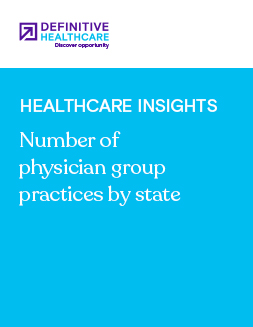Healthcare Insights
What were the most prescribed antibiotics of 2023?
Antibiotics are essential for treating bacterial infections that, if left unchecked, could lead to severe health complications or death. They prevent infections from spreading, enable safe recovery from surgeries and complex medical procedures, and reduce illness duration and severity, making them foundational to modern medicine. By safeguarding against bacterial infections, antibiotics support public health, enhance patient outcomes, and allow for advances in medical treatments.
Understanding how antibiotic prescription trends can be essential for navigating the healthcare landscape, especially for life science companies. By analyzing this data, businesses can make informed strategic decisions across various critical areas. This includes product development, go-to-market, and medical affairs, ultimately driving commercial growth.
How many antibiotics are prescribed each year?
According to the CDC, healthcare providers prescribed nearly 270 million antibiotic prescriptions in 2023.
Using data from the Definitive Healthcare Atlas Prescription Claims dataset, we’ve ranked the top 10 most prescribed and dispensed antibiotics in 2023.
| Rank | Antibiotic drug name | % of antibiotic prescriptions dispensed in 2023 | Explore dataset |
|---|---|---|---|
| 1 | Amoxicillin | 18.26% | Explore |
| 2 | Amoxicillin And Clavulanate Potassium | 10.28% | Explore |
| 3 | Azithromycin | 8.89% | Explore |
| 4 | Cephalexin | 7.33% | Explore |
| 5 | Doxycycline Hyclate | 4.93% | Explore |
| 6 | Sulfamethoxazole And Trimethoprim | 4.50% | Explore |
| 7 | Metronidazole | 4.02% | Explore |
| 8 | Mupirocin | 3.93% | Explore |
| 9 | Cefdinir | 3.88% | Explore |
| 10 | Doxycycline | 3.01% | Explore |
Fig. 1 Data is from the Definitive Healthcare Atlas Prescription Claims dataset for calendar year 2023. Claims data is sourced from multiple medical clearinghouses in the United States and is updated monthly. Data accessed November 2024.
What were the most common outpatient antibiotics prescribed in 2023?
The most commonly prescribed antibiotic in 2023 was amoxicillin, accounting for 18.26% of prescribed and dispensed antibiotics. Amoxicillin is used to treat bacterial infections such as pneumonia, bronchitis, certain skin conditions, and kidney and blood infections. This antibiotic belongs to the penicillin group of medications.
Amoxicillin and clavulanate potassium, a combination antibiotic, was the second-most common antibiotic prescription, accounting for 10.28% of prescribed and dispensed antibiotics in 2023. Clavulanate potassium helps prevent certain bacteria from becoming resistant to amoxicillin. Combining it with amoxicillin helps the amoxicillin to remain active for a longer period.
The third-most common antibiotic was azithromycin, which accounted for 8.89% of prescribed and dispensed antibiotics in 2023. Azithromycin belongs to the macrolides group of antibiotics and is often used to treat sexually transmitted infections, certain respiratory infections, and skin conditions like acne. Providers also often prescribe this antibiotic to patients who are allergic to penicillin.
For more information about antibiotics, check out the CDC guide on antibiotic classes. Leveraging insights on antibiotic prescription trends to enhance strategic planning.
Understanding antibiotic prescription trends and which antibiotics are dominant in the market can provide essential information for commercialization strategies. Several types of organizations and businesses across the healthcare landscape can benefit significantly from knowing the most commonly prescribed and dispensed antibiotics.
This healthcare commercial intelligence can help payors, medical suppliers, and even biopharma companies compete more effectively, uncover growth opportunities, and tailor their offerings to meet specific needs. Here are some key players and how they could leverage this information:
Pharmaceutical and biotech companies
Pharmaceutical and biotech companies can use data on the most prescribed antibiotics to refine product development and marketing strategies. Understanding which antibiotics are in high demand can guide decisions on R&D investments, especially regarding drug formulations, dosing options, and potential new antibiotics to combat resistant strains.
In addition, knowing which antibiotics dominate the market can help these companies identify areas of unmet need, such as medications to treat antibiotic-resistant infections or new delivery methods that improve patient adherence. Focusing on these areas of unmet need can also potentially enable pharmaceutical companies to capture more market share and grow.
Medical suppliers and distributors
Logistics companies that specialize in storing and shipping pharmaceuticals can use this data to optimize systems related to storage and processes that impact transportation and delivery. Insights into which antibiotics dominate the market help these organizations react to shifts in the market and ensure timely access to the most in-demand medications.
This information can also help medical suppliers strengthen their brand positioning in the competitive marketplace. For example, focusing on transporting antibiotics might influence purchasing decisions, such as buying temperature-controlled transportation, to be better aligned with the needs of pharmacies, hospitals, and other providers.
Health insurance companies
Health insurers can use prescription data to analyze patterns and costs associated with antibiotic use. With a better understanding of what’s in demand, insurers can structure health plans that are more appealing to consumers, especially those needing frequent antibiotic treatments.
Medication prescription trends can help insurers combat overprescribing and antibiotic resistance—a growing phenomenon that biopharmaceutical companies are working to reduce.
Using medication prescription trends data for smarter marketing and sales efforts
Monitoring and analyzing trends in antibiotic prescriptions (and other medications) can also help businesses optimize their marketing and sales performance.
By using a combination of geographic, demographic, and medical and prescription claims data, organizations can segment their market into specific groups based on criteria such as age, disease prevalence, access to healthcare, chronic conditions, and much more. With this intelligence on hand, they can better understand the patients, prescribers, and providers in each market segment and then tailor product offerings and messaging accordingly, potentially leading to more effective sales campaigns.
For example, a biopharmaceutical company developing a novel treatment for ear infections in young children may emphasize targeting pediatric care facilities, the practitioners who offer care there, and the pharmacies often frequented by families.
There are plenty more ways businesses can leverage healthcare commercial intelligence and claims data to accelerate growth and compete more effectively. To learn more about additional use cases, check out our Atlas All-Payor Claims and Prescription Claims datasets. You can also gather new insights on physician prescriber behavior using PhysicianView.
Learn more
Healthcare Insights are developed with healthcare commercial intelligence from the Definitive Healthcare platform. Want even more insights? Start a free trial now and get access to the latest healthcare commercial intelligence on hospitals, physicians, and other healthcare providers.



